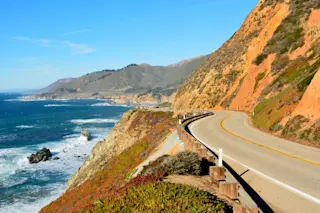The coast of California. (Credit: Alizada Studios/Shutterstock) How long is the U.S. coastline? It's a straightforward question, and one that's important for scientists and government agencies alike. The U.S. Geological Survey could give you an answer, too, but I'm going to tell you right now that it's wrong. In fact, no one could give you the right answer, and if you look around, you'll find a number of estimations that differ by seemingly improbable amounts. One government report lists the number as 12,383 miles. The same report admits that a different government agency says the figure is actually 88,612 miles. That's an almost eight-fold disparity for a fact that seems simple to obtain. We all know how to use a ruler, right?
Well, we all know how to measure a straight line, but what about a curve? And what if that curve has curves? The crux of the problem comes ...














